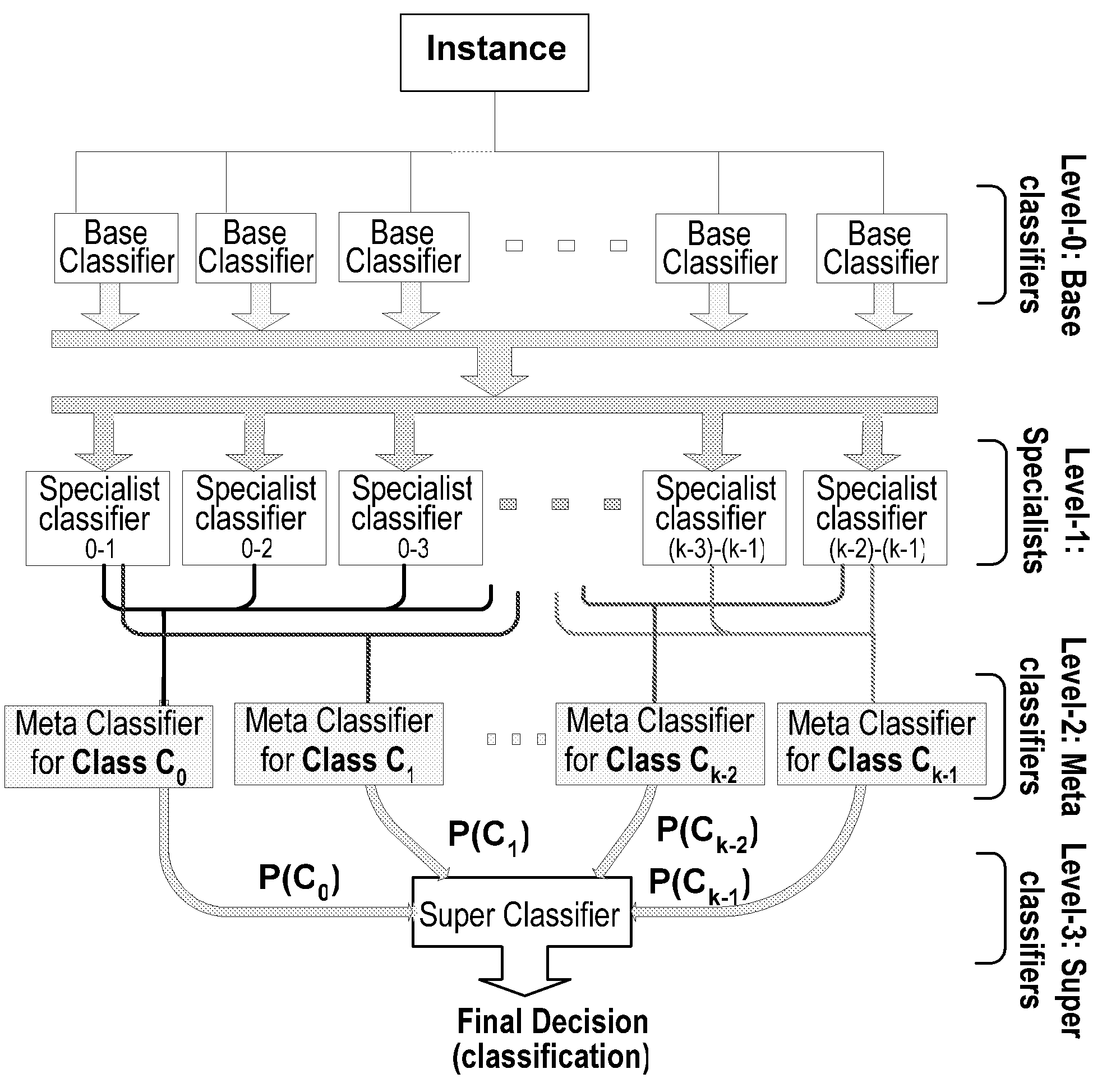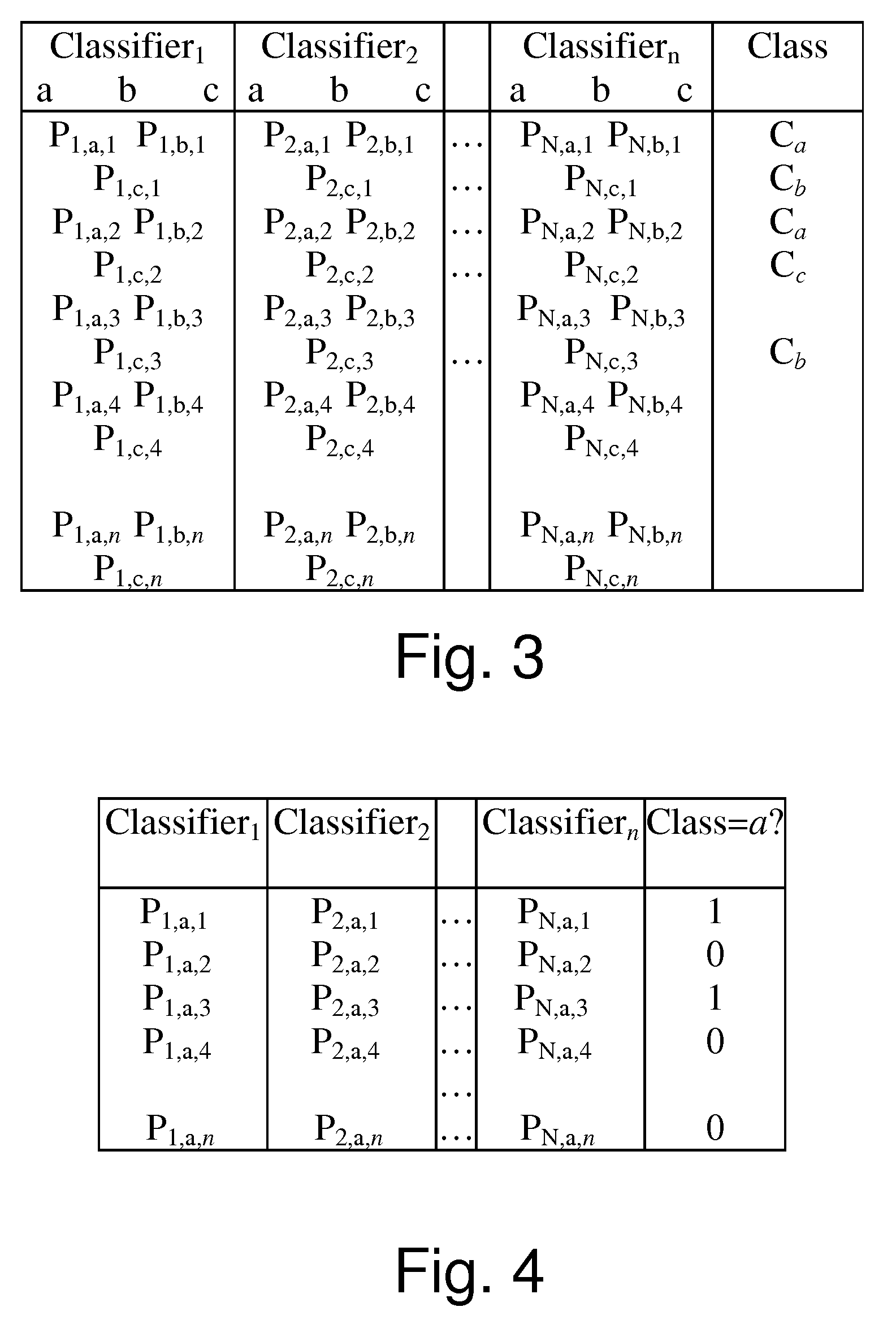Stacking schema for classification tasks
a classification task and stacking schema technology, applied in the field of data analysis, can solve the problems of increasing the training time of the meta-classifier, affecting the accuracy of the meta-classifier, and affecting the accuracy of the stacking schema, so as to improve the stacking schema, and improve the accuracy of the ensemble classifier
- Summary
- Abstract
- Description
- Claims
- Application Information
AI Technical Summary
Benefits of technology
Problems solved by technology
Method used
Image
Examples
Embodiment Construction
[0059]The idea of ensemble methodology, disclosed in the present invention, is to build a predictive model by integrating multiple models. It is well-known that ensemble methods can be used for improving prediction performance. Researchers from various disciplines such as statistics, machine learning, pattern recognition, and data mining have considered the use of ensemble methodology. Stacking is a general ensemble method in which a number of base classifiers are combined using one meta-classifier which learns theirs outputs. The advantage of stacking is that it is simple, in most cases performs similar to the best classifier, and it is capable to combine classifiers induced by different inducers. The disadvantage of stacking is that it seems to perform worse on multiclass problems. In the present invention, a new method (named Troika) for improving ensemble classifiers using stacking is disclosed. The new scheme is built from three layers of combining classifiers. The new method w...
PUM
 Login to View More
Login to View More Abstract
Description
Claims
Application Information
 Login to View More
Login to View More - R&D
- Intellectual Property
- Life Sciences
- Materials
- Tech Scout
- Unparalleled Data Quality
- Higher Quality Content
- 60% Fewer Hallucinations
Browse by: Latest US Patents, China's latest patents, Technical Efficacy Thesaurus, Application Domain, Technology Topic, Popular Technical Reports.
© 2025 PatSnap. All rights reserved.Legal|Privacy policy|Modern Slavery Act Transparency Statement|Sitemap|About US| Contact US: help@patsnap.com



